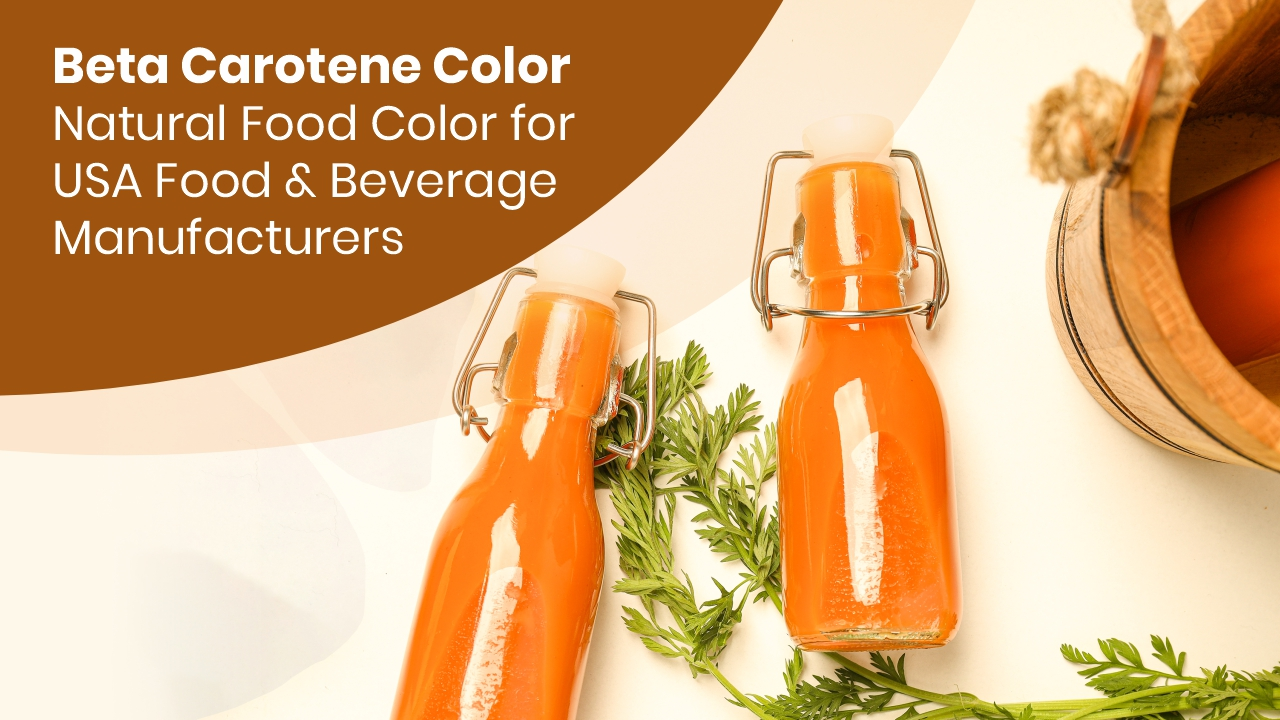

Director at Vinayak Ingredients, shares insights on Natural Food Colours, Modified Starch, Fruit & Vegetable Powders, and Fat Powder, helping businesses make informed sourcing decisions and develop high-quality food products.
The food industry in the United States is transforming rapidly as consumer opinions shift towards foods with natural, recognized ingredients. Growing worries over artificial additives, along with state-level regulations to outlaw petroleum-based dyes, have fueled the momentum towards natural colorants. Here, beta carotene is among the most widely used natural colorants with a balance of good color intensity and nutritional value. Market studies predict steady growth for beta carotene uses along with other food colors/food dyes of natural origin, and the food and beverage industry is the largest market sector.
Beta carotene is a carotenoid pigment naturally occurring in carrots, sweet potatoes, spinach, and other vegetables. Its molecular shape allows it to soak up light at the blue end of the visible spectrum, and for this reason, it imparts deep yellow to orange hues. Apart from its coloring capability, beta carotene is a provitamin A, which functionally distinguishes it from most other food colorings. Commercially, it may be available in a range of delivery forms like water-dispersible powders, oil suspensions, and beadlet encapsulations, in order to enable the manufacturer to formulate its use to fit individual product matrices. This quality has provided it a steady place in product ranges from soft drinks to bakery fillings.
Beta carotene is a Food and Drug Administration (FDA) approved color additive in the United States. It can be used by manufacturers without FDA permission on a batch-by-batch basis, provided that it meets identity and purity requirements and is applied in compliance with Good Manufacturing Practice (GMP). It is also GRAS (Generally Recognized As Safe), further contributing to its safety profile
Beta carotene is valued for its stability to give yellow to orange shades that match consumers’ best perception of natural color. Beta carotene is applied extensively in milk foods, where it gives the characteristic golden color. In liquids, beta carotene imparts an attractive orange color. Bakery and confectionery products also benefit from its warm hues to provide depth to cakes, coatings, and sugar confections. In addition, dietary supplements and nutraceuticals also use beta carotene both for color and vitamin A activity and thereby impart the twin benefits of color and nutrition.
Unlike artificial colors, beta carotene also imparts physiological functionality in addition to color. It is a precursor to vitamin A. Beta carotene is a free radical quencher as well, neutralizing free radicals that cause oxidative stress and cell damage. The dual value, nutraceutical and functional, has made Beta carotene even more appealing to manufacturers who wish to create their products unique in a health-aware market. Scientific research underscores the fact that food form beta carotene is generally tolerated in most cases, though excessive levels of supplementation regardless of food matrices have been linked to adverse effects in some populations, giving prominence to balanced use.
Several leading food manufacturers have reformulated conventional ranges by substituting synthetic colorants with beta carotene to suit customer demand.
For example, beverage companies have introduced fruit drinks and fruit smoothies colored with beta carotene emulsions on color stability grounds as well as a “from nature” positioning. Similarly, bakery companies have turned to beta carotene powders in order to achieve consistent orange shades in icings and fillings, in addition to focusing on the nutritional quality of provitamin A. Industry research confirms that these changes not only improved brand image but also achieved better market acceptance on the part of health-oriented consumers.
Beta carotene is well-placed to be a cornerstone in the conversion process to natural food color within the U.S. food and beverage market. Beta carotene is a great alternative for artificial colors by providing an intense vibrant color, granted approval under regulations, and attracting nutritional notice. Further technological advances in encapsulation, and low-cost extraction methods will further improve its stability and open up broader applications. With consistent market demand moving toward functional and natural ingredients, beta carotene stands at the epicenter of product innovation
Vinayak Ingredients (INDIA) Pvt. Ltd. has over 24+ years of experience in delivering high-quality Food Additives. We focus and manufacture products obtained from Natural sources such as Natural Colors, Spray-dried Fruit and Vegetable Powders & Natural Extracts which are eco-friendly and environmentally sustainable.